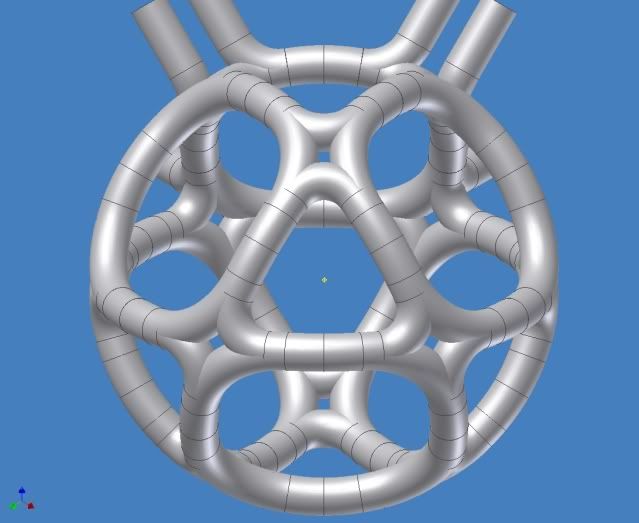ltgbrown wrote:Something I have been trying to wrap my head around is how to support any of these structures, even the simplest current magrid design. I am assuming at least two supports per coil.
Generally, yes, at least two supports.
ltgbrown wrote:So, do you want magnetic fields around the supports to prevent recirculating electrons (or ions!) from impacting them?
I think this is good idea.
ltgbrown wrote:If so, how do you run the wires (or tubes) carrying the current to create the magnetic field through the supports without creating unequal magnetic fields around the magrid?
One doesn't.
ltgbrown wrote:Current flowing down a support to the magrid would create a magnetic field, but if the current returns back up the same support, wouldn't that negate (or at a minimum severly distort) the magnetic field?
Indeed.
ltgbrown wrote:If so, then wouldn't all current flowing to the magrid have to be in a different support than the one the current flowing from the magrid is in?
Which is why I created the octahedron with twenty-four support arms:

the dodecahedron with one hundred twenty supports:

the cube:

and last, for fun, the dual hexagonal pyramid with thirty-six supports:

All of these configurations have four conductors parallel to each other running from the "rings" toward the chamber walls. Some have objected to this arrangement on the grounds of magnetic field considerations.
ltgbrown wrote:Wouldn't that create portions of a magrid face with one more turn of wire with current flowing through it and therefore a slightly stronger field?
I don't think so, but I haven't thought about it carefully.
ltgbrown wrote:Perhaps these affects are insignificant and only affect the final efficiency and not the ability to actually achieve fusion and eventually (we hope) net power at a reasonably sized reactor.
Now, we* don't know all the significant factors for polywell success. Later, we hope to know what is significant.
*The publicly responding members of this forum. Patience, as a virtue, is its own reward. But I want it
now!"Aqaba! By Land!" T. E. Lawrence
R. Peters













